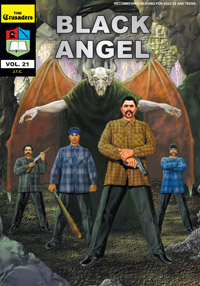Some Public Schools Becoming War Zones
Recent high-profile, deadly incidents have riveted our attention on violence in public schools. "Columbine" has become a household word after the weeks and weeks of media focus on the Colorado high school massacre.
Copycat incidents have sprung up around the country. In January, two boys in Cleveland, aged 15 and 16, pleaded guilty to conspiracy to commit murder when their plot to conduct a Columbine-style killing at their school was discovered.
And the problem of school violence is not just a U.S. phenomenon. In France, three teenagers in a Paris suburb were booked for extortion and attempted murder when they threw an 11-year-old boy off a 10-foot staircase for refusing to do their Spanish homework for them. Parents have joined striking teachers in wide spread protests over school violence.
The U.S. Department of Education reports that in 1997, students ages 12 through 18 were victims of nearly 3 million total crimes at school with about 202,000 of them being serious violent crimes including rape, sexual assault, robbery and aggravated assault.
Teachers who have watched the growing violence remember when the major offenses were chewing gum in class or writing on bathroom walls. Now, some students report that they would rather delay visiting the bathroom than risk serious injury by gang members or other student thugs.
The invasion of street gangs into the schools contributes to the fear of fellow students as well as teachers. The USDOE also reports that over the 5-year period from 1993 to 1997, teachers were victims of nearly 2 million non-fatal crimes at school including 650,000 violent rapes, robbery, and aggravated or simple assault. This translates into 84 crimes per 1000 teachers per year.
Even at the lower grade levels, 12 percent of all elementary and secondary school teachers were threatened with injury by a student and 4 percent were physically attacked by a student.
This, of course, has created a national teacher shortage. Older teachers are taking early retirement. Young people looking for a profession are not interested in spending their life in "... a small room with concrete walls in which you are supposed to bring adolescents with spiked hair, 20 piercings and way better cars than yours into a world in which quadratic equations and the Treaty of Versailles are actually important," as one columnist put it.
A veteran teacher in a letter to the editor of a national newspaper wrote: "I have been teaching for 22 years and cannot believe the deterioration of both attitude toward learning and academic performance that I see in high school today."
Another writes; "I have been a high school teacher for 27 years. During that time, I've been called dirty names (in several languages), had stuff thrown at me, been hit and spit on. I have had human feces dumped outside my door. My room has been broken into, vandalized and burglarized three times. My car has been broken into. I have suffered fractured bones in the line of duty, and I've been threatened with lawsuits, all in the name of education.... Teaching used to be fun and exciting but not any more."
Soul winners, we have a whole new generation to reach. In 1952 only 6% of America's kids reported receiving no religious training at all. By 1996 that figure had risen to 35 percent.
Public schools have become a hostile mission field but gospel tracts can make a difference. We need to get them into the hands of our church kids to saturate their schools.
- See more articles on related topics:
- Other Subjects
Other Articles from March/April 2000:
- Booklet Defining KJV English Words Fits in Back of Your Bible
- Failed Prophecies Cast Doubt on All Watchtower Interpretations of Scripture
- Pope Declares Jubilee Year - Brings Back Indulgences
- Chick Mail Bag Mar-2000
- Media Ignores Brutal Murder by Homosexuals
- NIV Subtly Diminishes Character and Ministry of Jesus
- Prison Ministry Letters: March-2000
- Schools Pressured to Tell Students Sodomy is OK
- Tract Passing Tips- March 2000
- Get the Word of God Out While You Can!
More on Other Subjects:
Products of Interest:
-

Tract Assortment
Big sample pack with 130 titles of world-famous Chick tracts. Have the right tract for ANYONE! Great stories, simple Gospel. -

Black Angel
32-PAGE, FULL COLOR COMIC BOOK - The true story of a gang leader from Ontario, California who became a new man when he met Jesus Christ. Gone were the drugs, girls and rage. God replaced it with peace and the ability to forgive. His message to young people: "Do not waste away years of your life like I did!"
-

He Never Told Us (retail)
If you're a Christian, will your friends say this about you?



